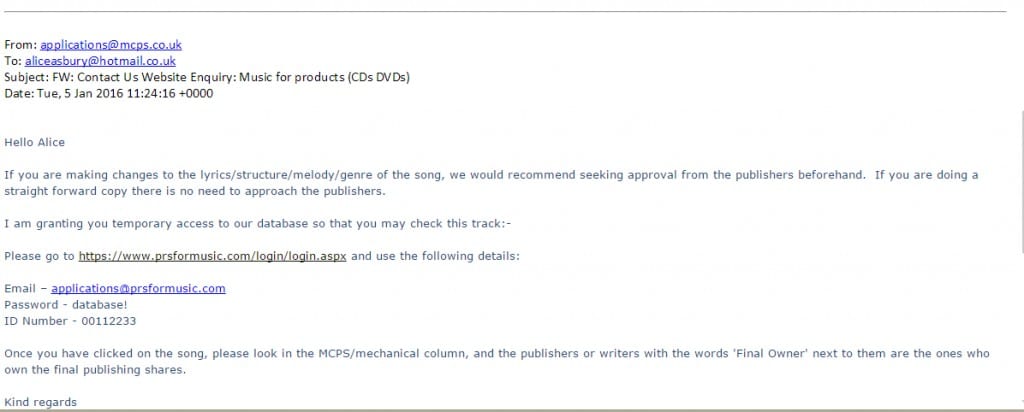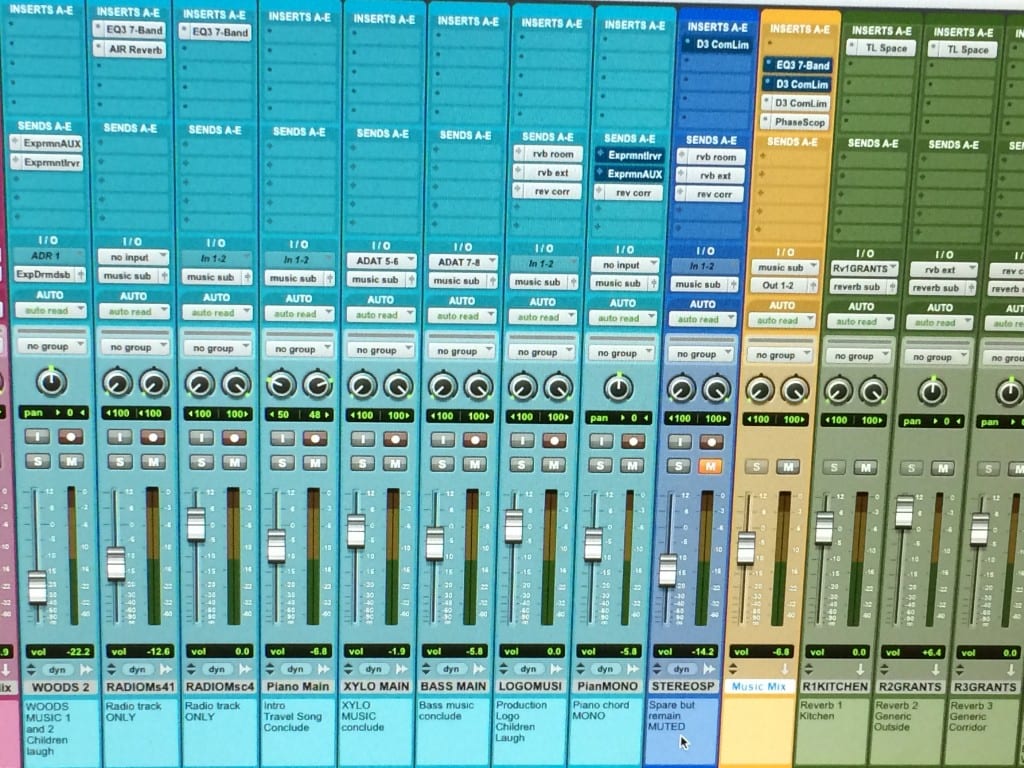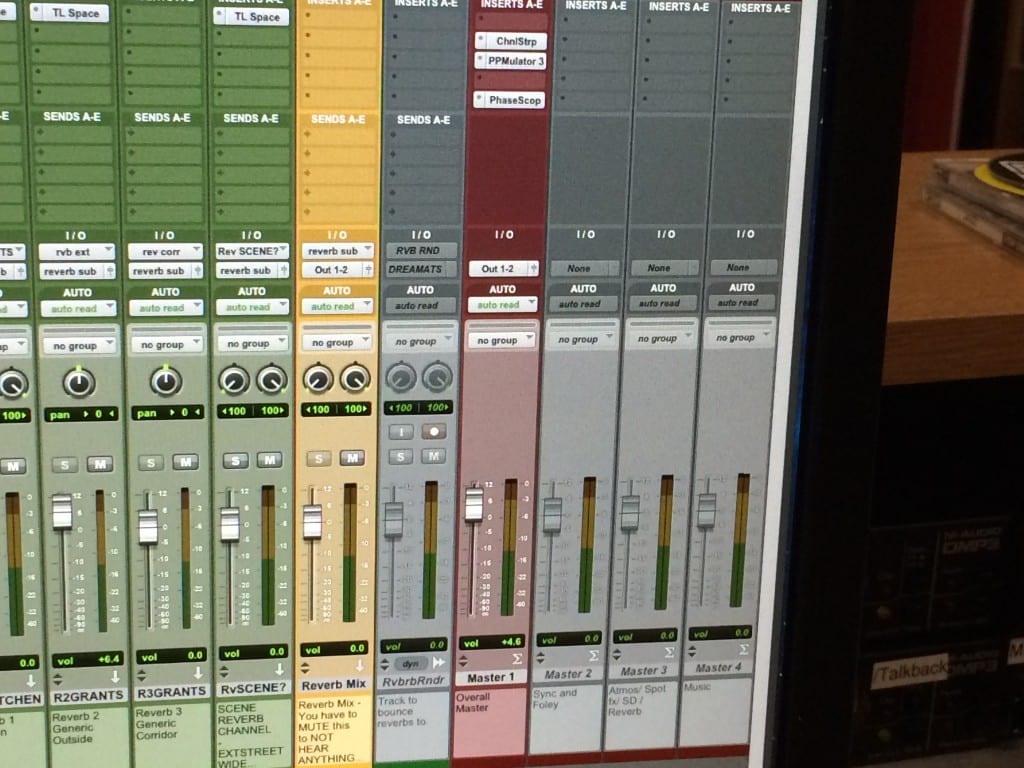The story of the song on the radio in George’s ‘Bread and Butter’ scene is worthy of mention as it’s an audio device demonstrating use of diagetic to non-diagetic audio, an example of which exists in Hitchcock’s Rear Window, and which was developed over the course of post-production in a way which better served the story than the original plan for the scene.
This was one of the few music cues that was supplied by George’s original director, requesting the use of Fred Astaire and Ginger Roger’s ‘Cheek to Cheek’ as the trigger for one of the characters fits of weeping, which was initially included as a nod to the movie Green Mile. The song is potentially out of copyright because it was written over 70 years ago in 1935, but as it was written for the film Top Hat there was some question as to whether copyrights could still be active, though research rapidly uncovered that Irving Berlin retained the copyrights for the songs in the film rather than the commissioning employer assuming them, in something of a landmark case. We were in the process of trying to clear this matter up with PRS when the first director departed the project.
As such, and precisely because I didn’t want the production team getting too attached to the inclusion of Fred and Ginger’s Cheek to Cheek (and because our original temp music for this scene was the Star War’s Cantina Band theme), I subsituted a temp track – ‘One More Kiss Dear’ by Vangelis from the soundtrack to the film Blade Runner – in a scratch mix I supplied to the new, incoming director before Christmas. I’d selected this track because I felt the lyric supported the story of ‘George’, it being suggestive of a final seperation between lovers.
The new director became enamoured with it, saying she much preferred this piece or something very like it to replace the original music cue and so we found ourselves trying to license a piece of music which was definitely copyrighted for our film’s use.
Initially the soundtrack used 35 seconds of the piece for quite an important aspect of the film which is very much brought to the audience’s attention. We felt that we were unlikely to get license to use the original piece in that context (and PRS obliquely agreed) and as such the music supervisor felt that constructing a cover of the piece was the best way to go. She made this enquiry to PRS, and received the following –
Our music supervisor deconstructed the track to its piano component to create a guide, and we rerecorded the song’s other instrumentation seperately. I played the bass and we asked a local vocalist to sing the version for us before I recorded and mixed the minute or so of the piece we’d created, of which we ended up using 28 seconds, and which is available in this post. Furthermore, our use of the piece in the transition from diagetic to non-diagetic audio can be construed as a nod to the opening of Shawshank Redemption which uses a very similar device.
I learned three important things from this whole process:
“For many composers, working with a temp track is the creative equivalent of a straightjacket. After weeks or months of cutting the film to that amazing John Williams theme, the director has usually fallen in love with his or her temp score and nothing else will do.” – Trueherostudio.com
First, temporary music tracks are to be used sparingly. We were warned about this phenomenon in Lol Hammond’s guest lecture and this scene proved to be no exception to the rule, but in this case I think the result was worth the effort of recording an entirely new cover of the song and this was likely a simpler process than composing a new song in a similar vein which would then have needed recording anyway.
Secondly, I think it would have been more efficient to pick up the phone and call the PRS with our requests. We were dealing with this particular cue towards the end of a very short period of post production and, whilst fairly prompt, the combination of the email turnaround time and a couple of miscommunications as we tried to clarify the situation was inefficient.
The final thing I’ve taken away from this is that Star Wars Cantina Theme can brighten up ANY scene –
https://youtu.be/boPpfiaUNsw
——————————————————————
Key Points
Research and contact with PRS – Planning & Research
- To expand my knowledge of the theory and audio techniques deployed in the films influencing ‘George’, and in drama as a genre more generally.
Examine and implement professional practices in their production work in relation to professional contexts, clearances, ownership, copyright and commissioning.
Comply with legal and ethical codes of conduct; health & safety regulations.
Involvement with production of cover version for the soundtrack – Application of skills and conduct in production
- To contribute extensively to the practicalities of creating and recording music for, and of recording location sound for the piece.
To have a good degree of creative involvement in the conception and direction of the soundtrack for the piece.
Assess the technical requirements of a production to inform the selection of appropriate tools, techniques and processes
Reflection on the process – Individual reflection on learning and team role.
-
Critically reflect and evaluate individual learning outcomes



